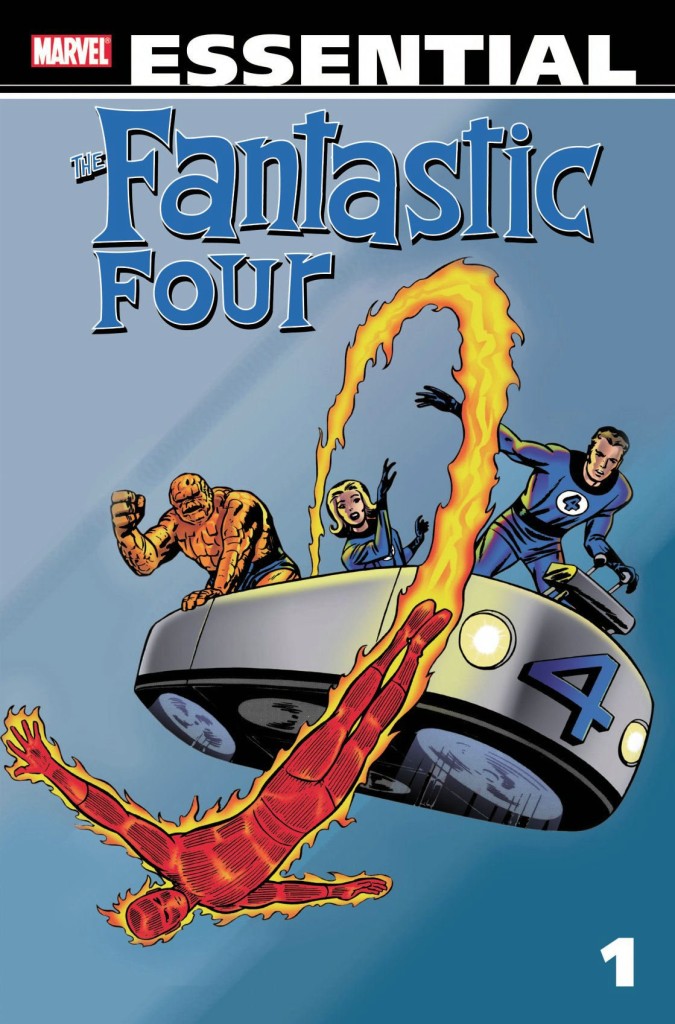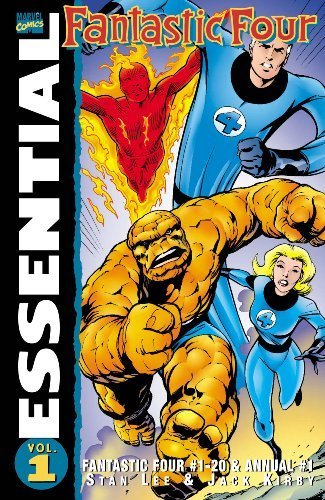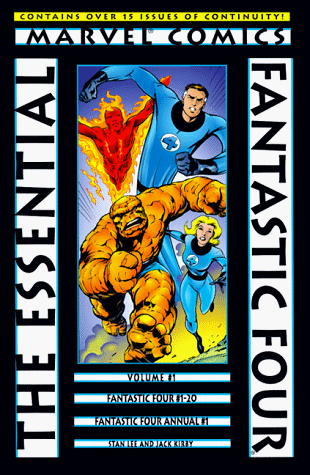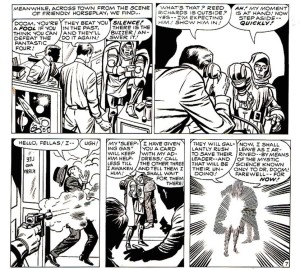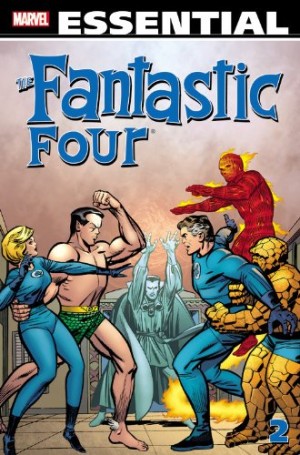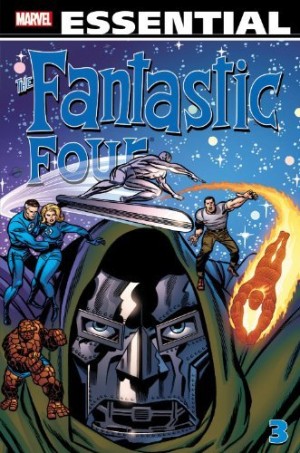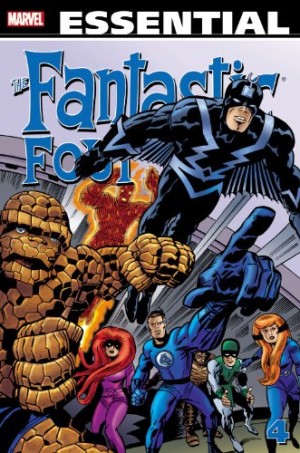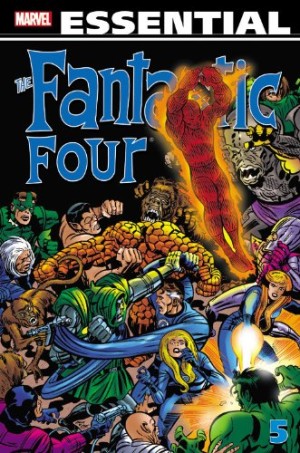Review by Graham Johnstone
Stan Lee and Jack Kirby’s Fantastic Four, was the foundation of the what became the Marvel comics, movies and merchandise brand. This first volume reprints the first twenty issues and Annual 1, in budget black and white.
The FF have super-powers that reflect their personalities. Inventor Reed Richards becomes the infinitely malleable Mr Fantastic, impetuous youth Johnny Storm becomes the Human Torch, and Ben Grimm, secretly vulnerable man inside a rugged exterior becomes The Thing. Last and cruelly least, sole female, Sue Storm, gets the most passive, least heroic power. As Invisible Girl, Sue can escape danger and have slightly more chance of helping fight their tough male adversaries. Today, that indicates not so much her personality as a socially constructed role. Lee and Kirby must have recognised these limitations, as they would later expand her powers.
These are both fun adventures, and witty ‘meta-fictions’. They comment on and subvert genre conventions. For example, any child reading superhero comics must have wished at times that the heroes would stop hiding behind secret identities and enjoy the glory, and that’s actually what happens here. The FF are celebrities – we see them going to pick up the latest issue of their comic. How do superheroes afford all their gadgets and secret lairs? The FF can’t and they go bankrupt. They’re even invited to appear in a ‘reality’ movie about themselves.
Later in this volume we see them reading their fan mail. This becomes a witty way of working (presumably real) fan questions into the comic. As they read and discuss the mail. they revisit the origin story, elaborating on their relationships, and recall examples of Sue’s contribution to the team. At one point it becomes even more meta, referring to its own creation. Lee and Kirby are shown thinking up story ideas, when FF’s nemesis Dr. Doom appears and pressures them to lure Reed Richards to their offices.
However, the execution is not always as innovative as the idea. The Mole Man and his beasts, the shapeshifting alien Skrulls, Kurrgo from Planet X, vengeful magician the Miracle Man, and the grotesque Puppet Master could have been lifted from the company’s earlier monster, horror and supernatural anthologies. Stories with The Hulk, Ant Man and Sub-Mariner are also run of the mill.
Among the better stories, ’The Impossible Man’, is an all-powerful alien who can instantly turn into anything he wishes. Yet, he’s child-like and unaware of earth customs. It’s great fun, and the alien’s transformations are a brilliant vehicle for Kirby’s visual imagination.
The Mad Thinker is a brilliant invention. He’s able to plan and predict in amazing detail – including playing on the team’s desires to manoeuvre each member away from the FF: Sue to Hollywood, Johnny to the circus, etc. It’s great fun and Reed’s own pre-planned solution is amusingly contrived. The clash with Soviet rival ‘The Red Ghost’ is interesting for the cold war/space race backdrop, as well as the first appearance of the Watcher, who’ll be pivotal in one of the classic storylines in volume three.
The stories have plenty of moments of wit and invention, but Kirby’s dynamic artwork sold them. The powers, props and paraphernalia of superheroes would fuel and inspire his best work. In both story and art though, the best was still to come.
These stories are also available in colour in the first volume of the Fantastic Four hardback Omnibus, and over the first Marvel Masterworks: Fantastic Four volumes one and two.
